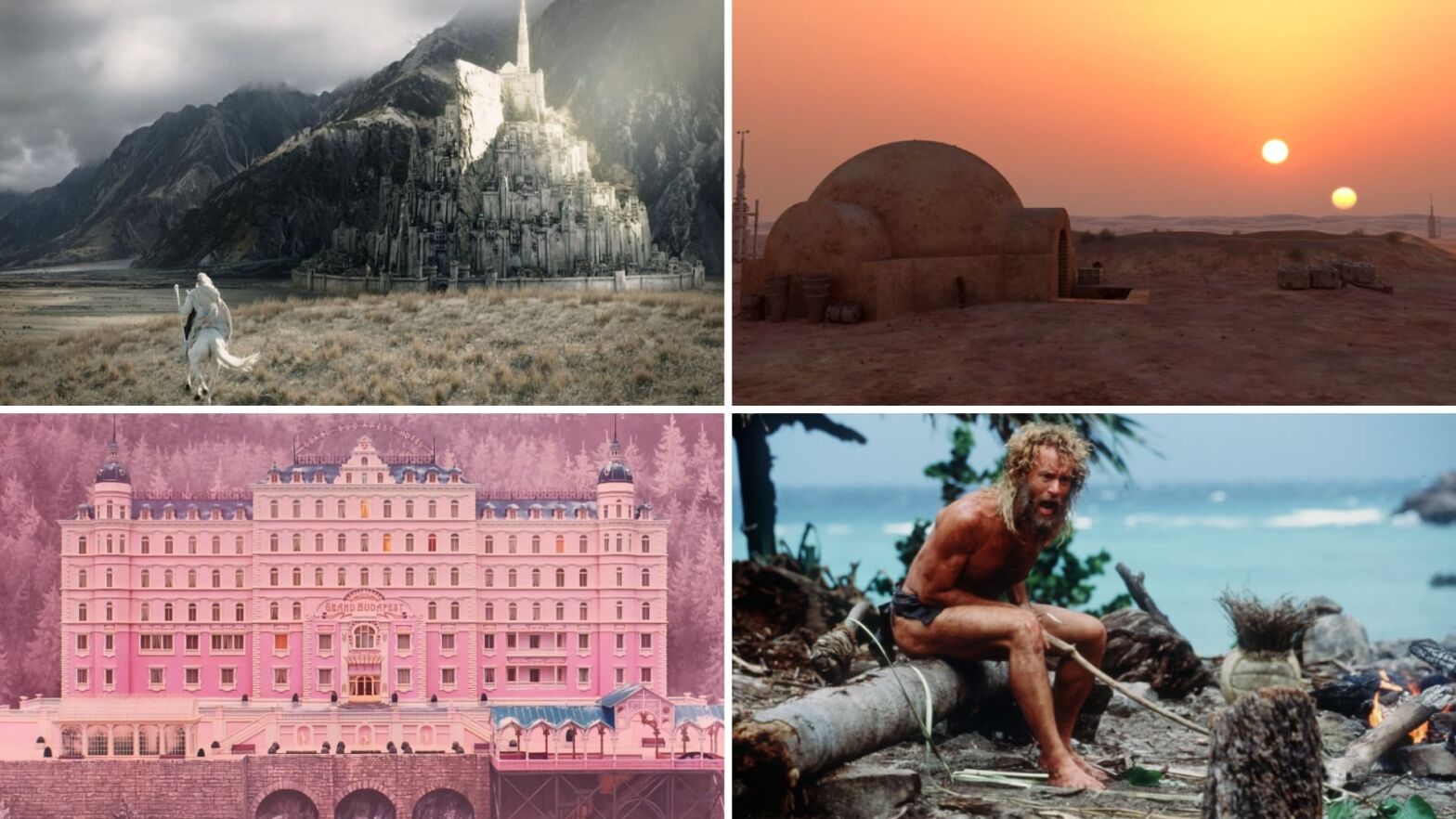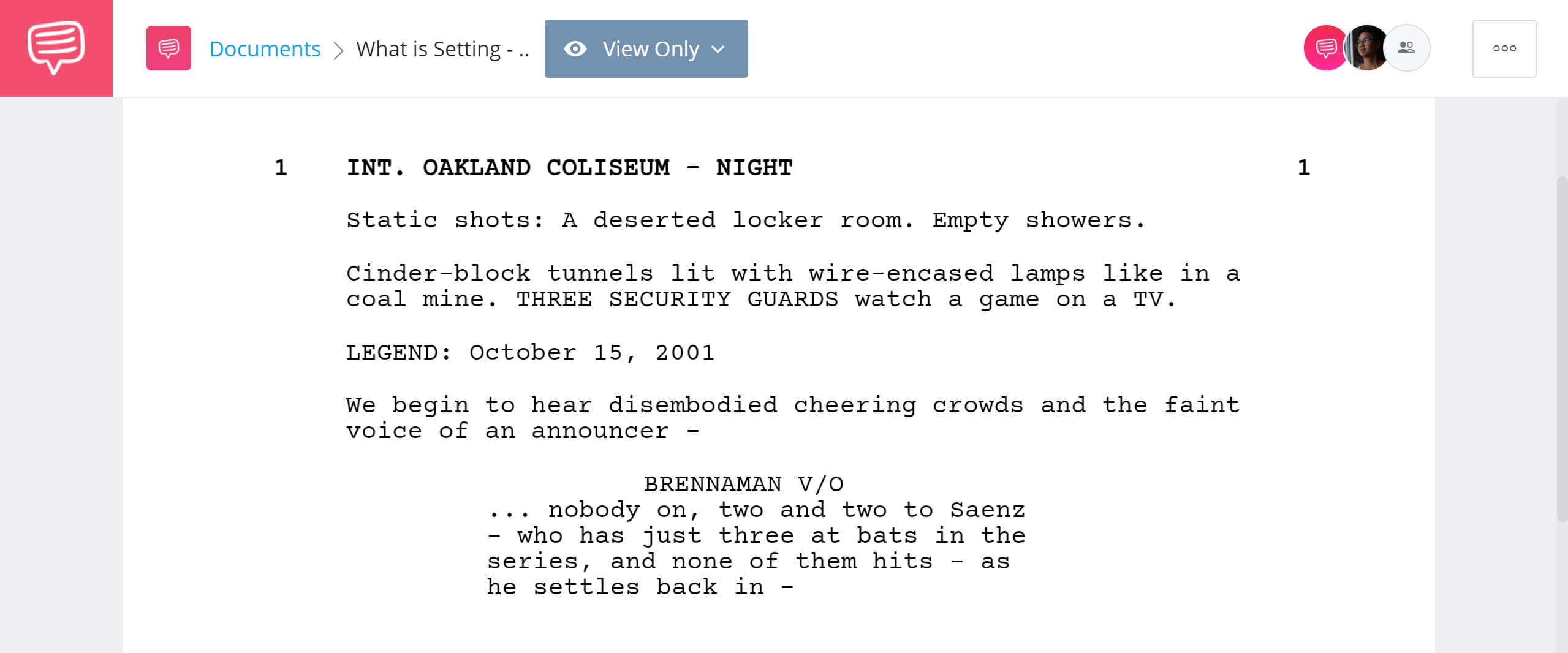What is the setting of a story? Is it simply the time and place of a story? Or is it something more? We’re going to look at some examples of setting in literature and film to see how writers and directors communicate time, place, and more in their works. But before we jump into some examples, let’s quickly review how setting is an integral part of every story.
Why is Setting Important?
First, let’s define setting
What are settings in a story? A setting in a story is a time and place where narrative exists; a single story can include numerous times and places — but it’s not possible for a story to exist without a setting. Because of this, we regard setting as a foundational aspect of storytelling. But what is a setting?
Well, it’s everything that suggests time and place. It’s the answer to the questions: where are we and when are we?
Setting of a Story Examples • Lost - Where are We?
Some stories, such as the TV show LOST, use their setting as a plot device to drive the story forward. Now that we know the essential questions behind the question “what is a setting in a story,” let’s formally define setting.
DEFINE SETTING
What is the setting of a story?
A setting is the time and place of a story. Setting is either outwardly articulated to us, or discretely suggested to us. It can be suggested by weather, clothing, culture, buildings, etc. In screenwriting, setting is written into the slugline of a scene heading. But setting isn’t just the location of a scene, it’s the time in which it exists as well.
Characteristics of Setting
- Time
- Place
- Surroundings
What is Established in the Setting of a Story?
How to communicate setting
There are many different ways that writers communicate setting. In literature, setting is communicated in two ways: dialogue, and descriptions. Of these, you’re least likely to find “setting” communicated in scene headings. That’s because it can come across as explanatory to the reader.
If a book has a lot of characters in different locations, then you may see the setting communicated in the scene heading, just as a means to remind us when and where we are in the story.
How do you find the setting in a story? Dialogue is one of the best tools to communicate setting in literature. Take this short exchange from Ernest Hemingway’s short story “Hills Like White Elephants” for example:
Hills Like White Elephants
"It's pretty hot," the man said.
"Let's drink beer."
"Dos cervezas," the man said into the curtain.
"Big ones?" a woman asked from the doorway.
"Yes. Two big ones."
What can we infer from this exchange? Well, first we can deduce that the two characters are in a warm climate. Second, we can deduce that they’re probably in a Spanish-speaking country. These deductions don’t change the story per se, but they do help us to construct the world in an imaginative sense.
Sometimes, setting is suggested in the descriptions of a scene. Take this excerpt from J.R.R. Tolkien’s The Hobbit for example:
The hobbit
IN A HOLE in the ground there lived a hobbit. Not a nasty, dirty, wet hole, filled with the ends of worms and an oozy smell, nor yet a dry, bare, sandy hole with nothing in it to sit down on or to eat: it was a hobbit-hole, and that means comfort.
It had a perfectly round door like a porthole, painted green, with a shiny yellow brass knob in the exact middle. The door opened on to a tube-shaped hall like a tunnel: a very comfortable tunnel without smoke, with panelled walls, and floors tiled and carpeted, provided with polished chairs, and lots and lots of pegs for hats and coats – the hobbit was fond of visitors. The tunnel wound on and on, going fairly but not quite straight into the side of the hill – The Hill, as all the people for many miles round called it – and many little round doors opened out of it, first on one side and then on another. No going upstairs for the hobbit: bedrooms, bathrooms, cellars, pantries (lots of these), wardrobes (he had whole rooms devoted to clothes), kitchens, dining-rooms, all were on the same floor, and indeed on the same passage.The best rooms were all on the left-hand side (going in), for these were the only ones to have windows, deep-set round windows looking over his garden, and meadows beyond, sloping down to the river.
This example from The Hobbit expertly shows us how to communicate setting through describing the environment. Remember: the use of specificity can be the difference between a bland setting and a vibrant one.
Notice how Tolkien writes, “perfectly round door like a porthole, painted green, with a shiny yellow brass knob in the exact middle” – this type of imagery allows our mind to create a visual world, just as the author intends.
Now that we’ve reviewed setting in literature, let’s review setting in screenwriting and film.
What is Included in the Setting of a Story Script?
How to write setting into scripts
As we alluded to earlier, setting is always communicated in the sluglines of a screenplay. What is a slugline? It’s essentially just the setting of a scene – and it looks something like this:

What’s the Setting of a Story? • Slugline Example
The slugline tells us whether the scene takes place inside (INT.) or outside (EXT.), and what time of day it is. The script may also tell us what year it is, depending on its relevance to the story.
We imported the Moneyball screenplay into StudioBinder’s screenwriting software to see how writers Aaron Sorkin and Steven Zaillian communicate setting in one of the best baseball movies of all-time. You’ll notice in this first example that they communicate the year in which the scene takes place into the legend, below the scene heading and before the dialogue.
What is the Setting of a Story? • Read the Scene in Moneyball
The legend is used to communicate a specific time within a story. Just remember that it should always be written after at least one description/action line. Sometimes, the setting of a script changes on a dime. When this happens, the writers must write new slug lines and legends for each change in setting. Let’s take a look at how two master screenwriters do it.
What is the Setting of a Story? • Read the Scene in Moneyball
The rapid change of setting can create a frenetic feel for the audience, just like it does in this scene from Moneyball. Consequently, the rapid change of setting can create montages as well.
Let’s take a look at the opening scene from one of Woody Allen’s best movies, Manhattan. Pay attention to the presentation of this setting — everything from the cinematography, music, and voiceover.
Setting of a Story Examples • Manhattan
Would you say that the opening scene to Manhattan is frenetic? No! If anything, it’s more of a lullaby than a rock-song. So how does Woody Allen make the rapid change of setting feel so slow? Well, I’d say a lot of it has to do with the voiceover.
By voicing over the change of setting, he creates a narrative through-line – it’s not so much what we’re seeing that matters, it’s what he’s saying and what we’re seeing that matters.
UP NEXT
What is a Metaphor?
Sometimes, settings are used as metaphors for something greater than what they actually are. But what is a metaphor? In this next article, we break down everything you need to know about metaphors, with examples from literature and film. After looking at examples of metaphors in films like Parasite and The Big Lebowski, you’ll know how to apply metaphors in your own works.


